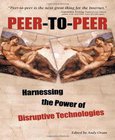Handbook of Surveillance Technologies
History & Applications
3rd Edition

Book Details:
| Publisher: | CRC Press |
| Series: | CRC Press , Handbook |
| Author: | Julie K. Petersen |
| Edition: | 3 |
| ISBN-10: | 1439873151 |
| ISBN-13: | 9781439873151 |
| Pages: | 1040 |
| Published: | Jan 23 2012 |
| Posted: | Nov 19 2014 |
| Language: | English |
| Book format: | |
| Book size: | 29.81 MB |
Book Description:
From officially sanctioned, high-tech operations to budget spy cameras and cell phone video, this updated and expanded edition of a bestselling handbook reflects the rapid and significant growth of the surveillance industry. The Handbook of Surveillance Technologies, Third Edition is the only comprehensive work to chronicle the background and current applications of the full-range of surveillance technologiesoffering the latest in surveillance and privacy issues. Cutting-Edgeupdates its bestselling predecessor with discussions on social media, GPS circuits in cell phones and PDAs, new GIS systems, Google street-viewing technology, satellite surveillance, sonar and biometric surveillance systems, and emerging developments Comprehensivefrom sonar and biometric surveillance systems to satellites, itdescribes spy devices, legislation, and privacy issuesfrom their historical origins to current applicationsincluding recent controversies and changes in the structure of the intelligence community at home and abroad Modularchapters can be read in any orderbrowse as a professional reference on an as-needed basisor use as a text forSurveillance Studies courses Using a narrative style and more than 950 illustrations, this handbook will help journalists/newscasters, privacy organizations, and civic planners grasp technical aspects while also providing professional-level information for surveillance studies, sociology and political science educators, law enforcement personnel, and forensic trainees. It includes extensive resource information for further study at the end of each chapter. Covers the full spectrum of surveillance systems, including: Radar Sonar RF/ID Satellite Ultraviolet Infrared Biometric Genetic Animal Biochemical Computer Wiretapping Audio Cryptologic Chemical Biological X-Ray Magnetic
Download Link:
Related Books:
Peer-to-Peer
Harnessing the Power of Disruptive Technologies
The term "peer-to-peer" has come to be applied to networks that expect end users to contribute their own files, computing time, or other resources to some shared project. Even more interesting than the systems' technical underpinnings are their socially disruptive potential: in various ways they return content, choice, and control to ordinary users.While this book is mostly about the technical promise of peer-to-peer, we also talk about its exciting social promise. Communities have been forming on the Internet for a long time, but they have been limited by the flat interactive qualities of email and Network newsgroups. People can exchange recommendations and ideas over these media, but have great difficulty commenting on each other's postin...
Handbook of Research on Global Diffusion of Broadband Data Transmission
Large investments have been made by various governments for the deployment of broadband within their respective nations; however, the citizens of such countries have demonstrated a slow adoption of this technology. The Handbook of Research on Global Diffusion of Broadband Data Transmission explores broadband adoption and the digital divide through a global perspective, providing up-to-date research on constructs such as relative advantage, utilitarian outcomes, hedonic outcomes, and service quality. Compiling cutting-edge research from over 100 noted experts in nearly 30 countries, this invaluable reference source allows policy makers, internet service providers, and others to gain multicultural insight into what factors actively influence consumers ...
Handbook of the Fundamentals of Financial Decision Making
This handbook in two parts covers key topics of the theory of financial decision making. Some of the papers discuss real applications or case studies as well. There are a number of new papers that have never been published before especially in Part II.Part I is concerned with Decision Making Under Uncertainty. This includes subsections on Arbitrage, Utility Theory, Risk Aversion and Static Portfolio Theory, and Stochastic Dominance. Part II is concerned with Dynamic Modeling that is the transition for static decision making to multiperiod decision making. The analysis starts with Risk Measures and then discusses Dynamic Portfolio Theory, Tactical Asset Allocation and Asset-Liability Management Using Utility and Goal Based Consumption-Investment Decis...
2007 - 2021 © eBooks-IT.org



